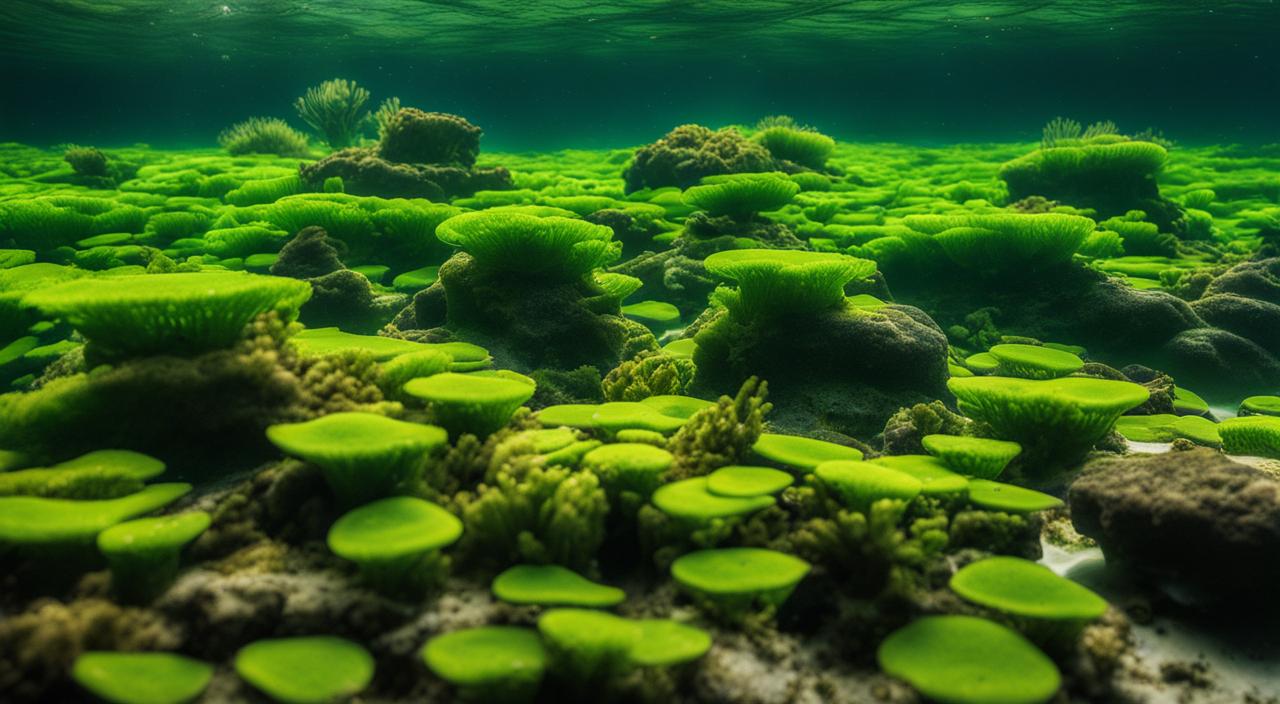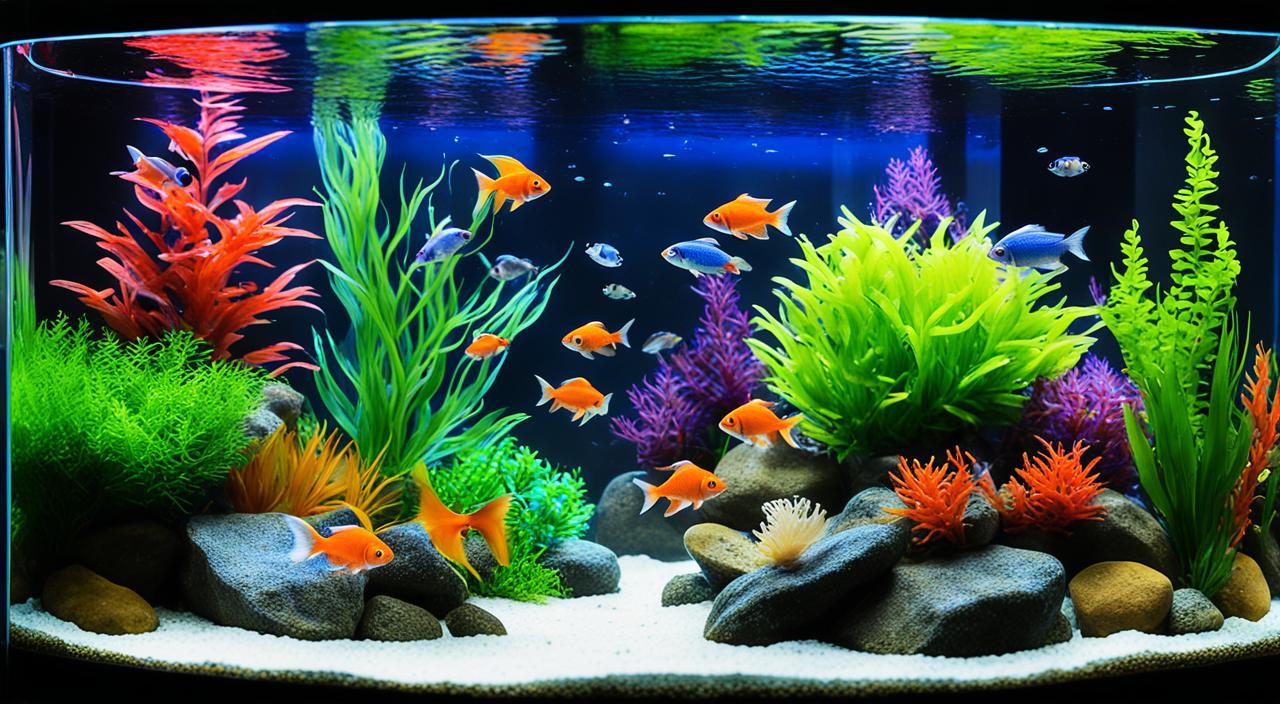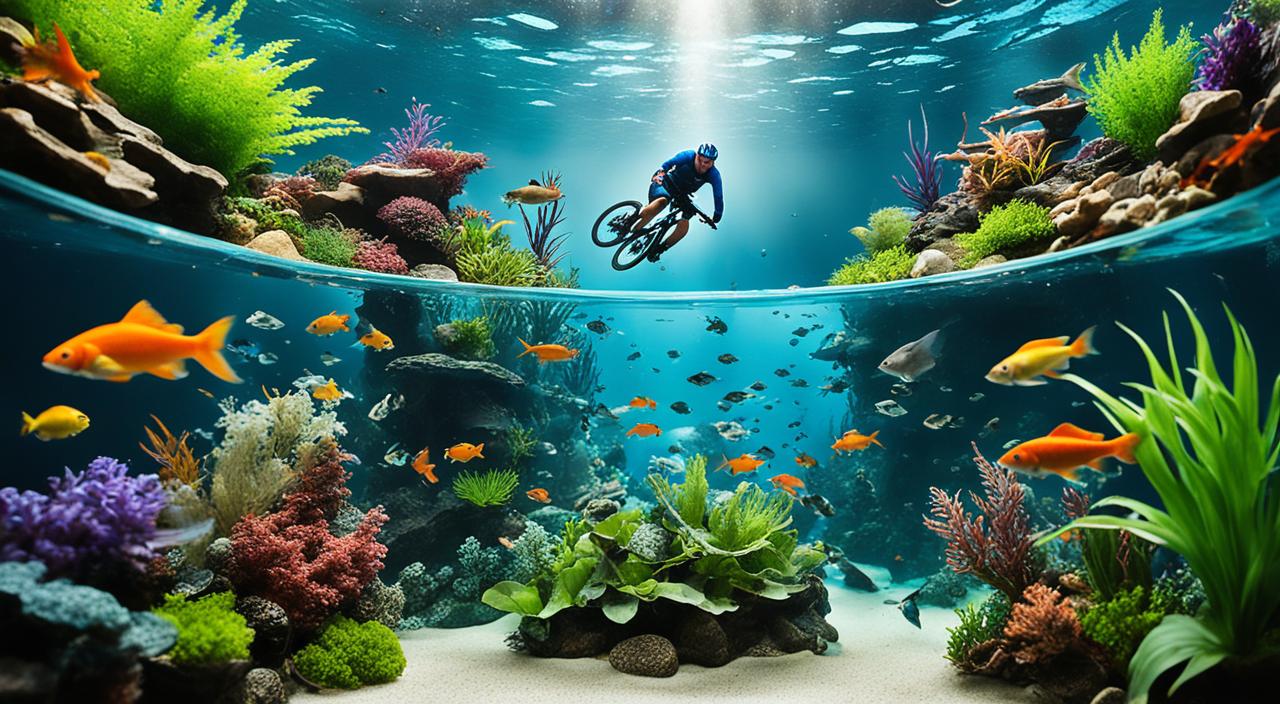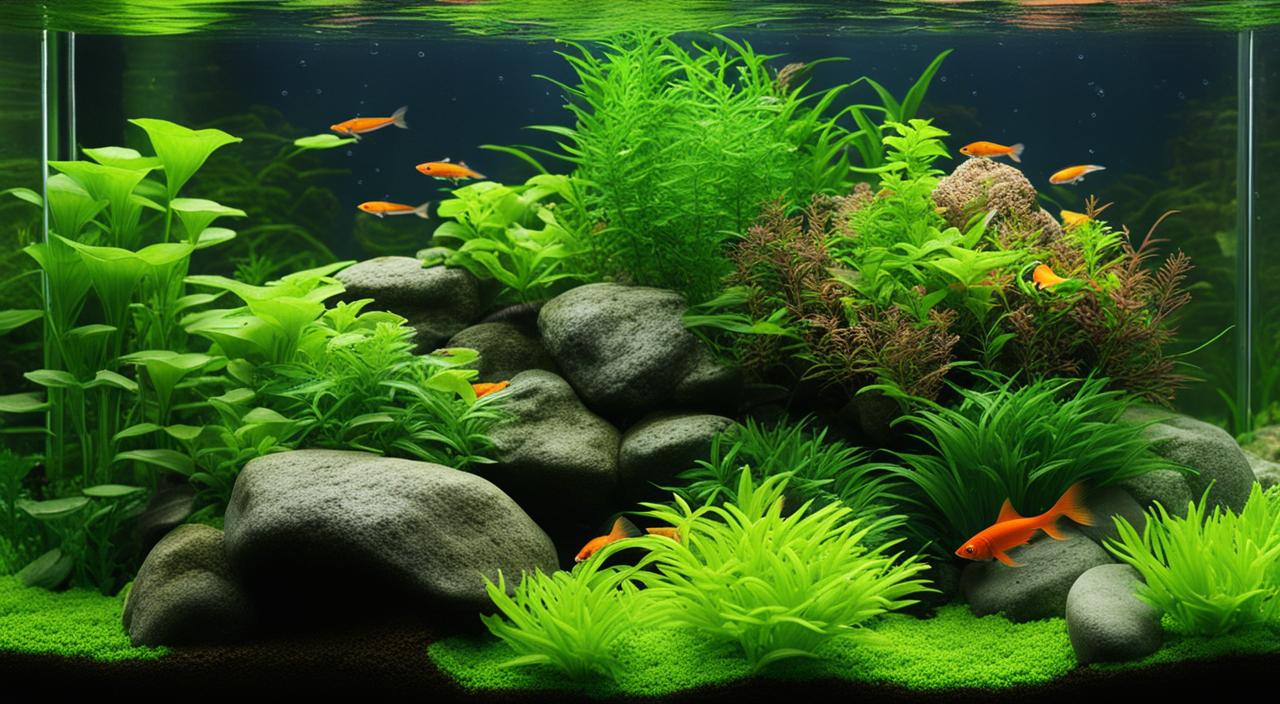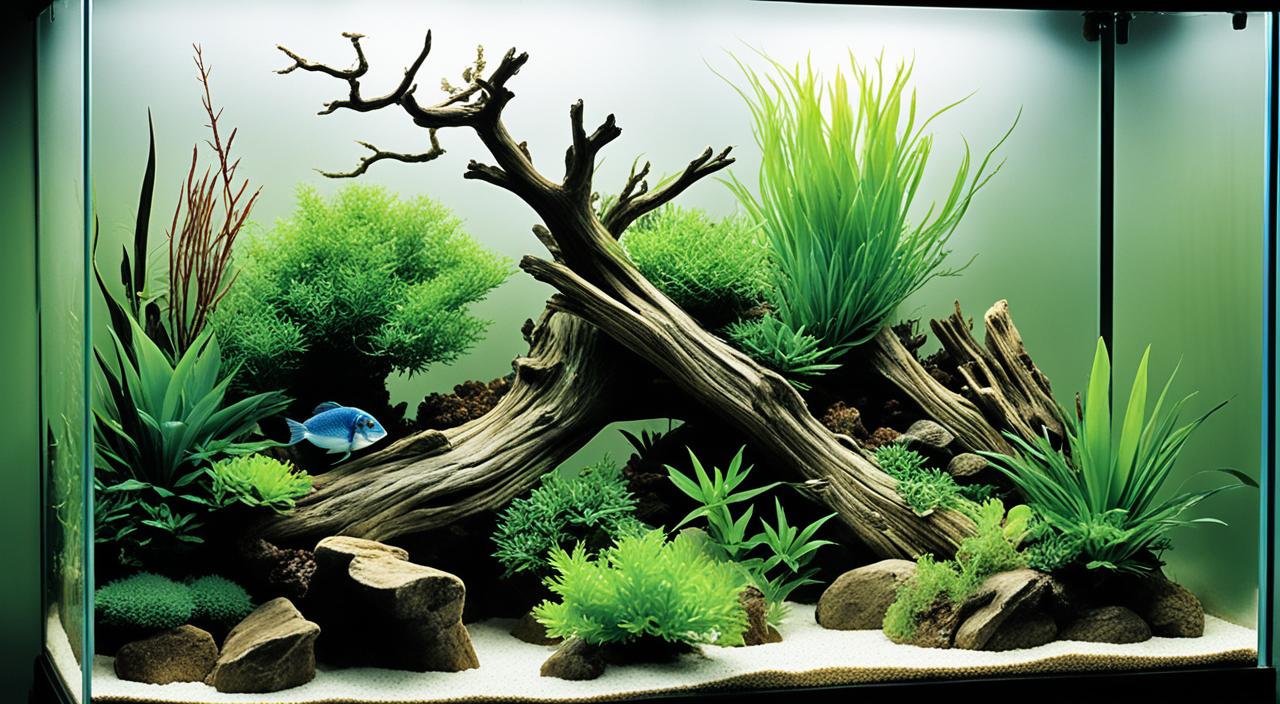Welcome to my article on the cycling process and algae growth in aquariums. Understanding the cycling process is crucial for creating a biologically stable environment for fish in an aquarium. During this process, nitrifying bacteria are introduced to regulate the nitrogen cycle and remove harmful substances such as ammonia, nitrite, and nitrate from the water. While the cycling phase is essential for wastewater treatment and nutrient removal, it can also lead to algae growth. But don’t worry; you can control and eradicate algae over time with the proper measures.
Key Takeaways:
- The cycling process creates a biologically stable environment for fish in an aquarium.
- Nitrifying bacteria regulate the nitrogen cycle and remove harmful substances from the water.
- Algae growth is a common occurrence during the cycling phase.
- Controlling algae growth requires proper plant density and the use of algivores.
- The cycling phase is crucial for sustainable biotechnology, including algae cultivation and algal biofuel production.
The Nitrification Process in Aquarium Cycling
Nitrification is vital in establishing a healthy and balanced ecosystem during the aquarium cycling phase. Nitrification is the process by which bacteria convert organic waste, such as dead plant parts and fish waste, into ammonium, nitrite, and ultimately nitrate.
The nitrification process begins with the action of bacteria and fungi, which break down organic waste and produce ammonium. This ammonium is then converted into nitrite by bacteria called Nitrosomonas. Finally, bacteria of the genus Nitrobacter convert nitrite into nitrate.
Ammonium and nitrite can be toxic to aquarium inhabitants, so monitoring their levels during the cycling phase is essential. High levels of these compounds can harm fish and other aquatic organisms. However, nitrate is less harmful and can be utilized by aquatic plants as a nutrient source.
When the cycling process is complete, ammonia and nitrite levels should no longer be detectable in the water, while nitrate levels may rise. This indicates that nitrifying bacteria have successfully established and are converting toxic compounds to safer forms.
The Importance of Nitrifying Bacteria
Nitrifying bacteria are the key players in the nitrification process. They are responsible for converting harmful ammonia and nitrite into less toxic nitrate. These beneficial bacteria colonize various surfaces in the aquarium, such as the filter media, substrate, and decorations.
The presence of nitrifying bacteria is crucial for maintaining water quality and ensuring the health of aquarium inhabitants. Ammonia and nitrite levels can quickly become dangerous without these bacteria, leading to stress and potentially fatal conditions for fish and other organisms.
Monitoring and Maintaining the Nitrogen Cycle
Regular monitoring of water parameters is essential during the cycling phase. Testing kits can measure the aquarium’s ammonia, nitrite, and nitrate levels. This allows aquarium owners to assess the progress of nitrification and take appropriate actions if levels become too high.
It is important to remember that the nitrification process takes time. Patience is vital when establishing a stable nitrogen cycle in an aquarium. During this phase, it is advisable to avoid introducing sensitive fish or adding large quantities of organic matter that could disrupt the cycling process.
| Ammonia | Nitrite | Nitrate |
|---|---|---|
| 0 mg/L | 0 mg/L | Up to 20 mg/L |
In a well-established aquarium, nitrate levels should be monitored and controlled through regular water changes and specialized media or plants that can absorb excess nitrate. Aquarium enthusiasts can create a thriving and healthy aquatic environment by maintaining optimal water conditions and supporting the growth of nitrifying bacteria.
Algae Growth and Plant Conversion in the Cycling Phase
During the cycling phase of an aquarium, the newly introduced aquatic plants adapt from their emersed form to their submerged form. This transition can temporarily deteriorate the plants and create favourable conditions for algae growth due to the lack of competition.
Algae growth, including diatoms and green thread algae, is expected during this phase. It is crucial to ensure sufficient plant density to control algae growth and establish a healthy balance between plants and algae, especially with fast-growing species.
Plant Density: Achieving a Balance
To prevent excessive algae growth, it is essential to maintain a proper plant density in the aquarium. A higher plant density provides greater competition for resources, such as light and nutrients, effectively reducing the available resources for algae growth.
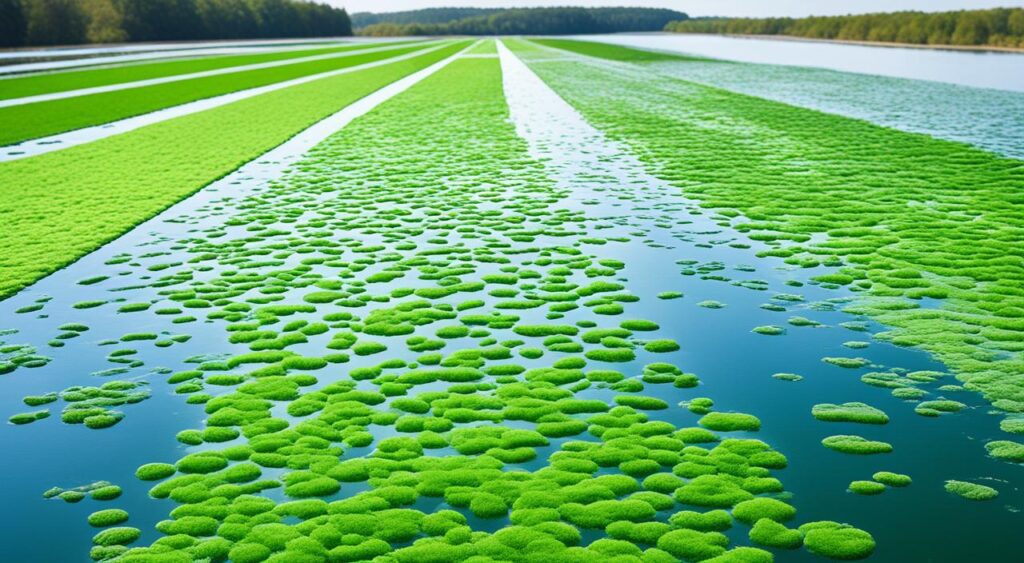
By adding healthy plant mass and ensuring an optimal nutrient supply, you can create an environment that favours the growth of aquatic plants while minimizing algae proliferation. Fast-growing plant species, such as Anubias nana or Egeria densa, can be particularly effective in out-competing algae due to their ability to consume nutrients at a rapid rate.
Establishing a dense carpet of plants or creating tall background plants can further help shade the aquarium, limiting the amount of available light for algae to thrive. Additionally, floating plants, such as Salvinia natans or Water lettuce, can provide additional shade and nutrient uptake, mainly if your aquarium receives direct sunlight.
By maintaining an appropriate plant density and implementing strategies to promote plant growth, you can effectively control algae and create a balanced and visually pleasing aquatic environment.
First Countermeasures Against Algae
Once the water values permit (ammonia and nitrite not detectable), the first countermeasures against algae can be implemented. Algivores, such as Amano shrimp and Neritina snails, effectively control algae growth, mainly green thread algae and thin algae coats. These algae eaters can significantly reduce the amount of algae in the aquarium within a few days. Manual removal of loose algae through water changes or using a scraper can also help control algae. Maintaining diligence and patience in reducing algae growth and establishing a better balance between plants and algae is essential.
Algivores play a vital role in maintaining a clean and healthy aquarium environment by consuming algae. Amano shrimp, also known as Caridina multidentata or Caridina japonica, are popular choices for algae control due to their voracious appetite for various types of algae. These tiny crustaceans are known for their ability to consume green thread algae, diatoms, and other filamentous algae that may grow in aquariums.
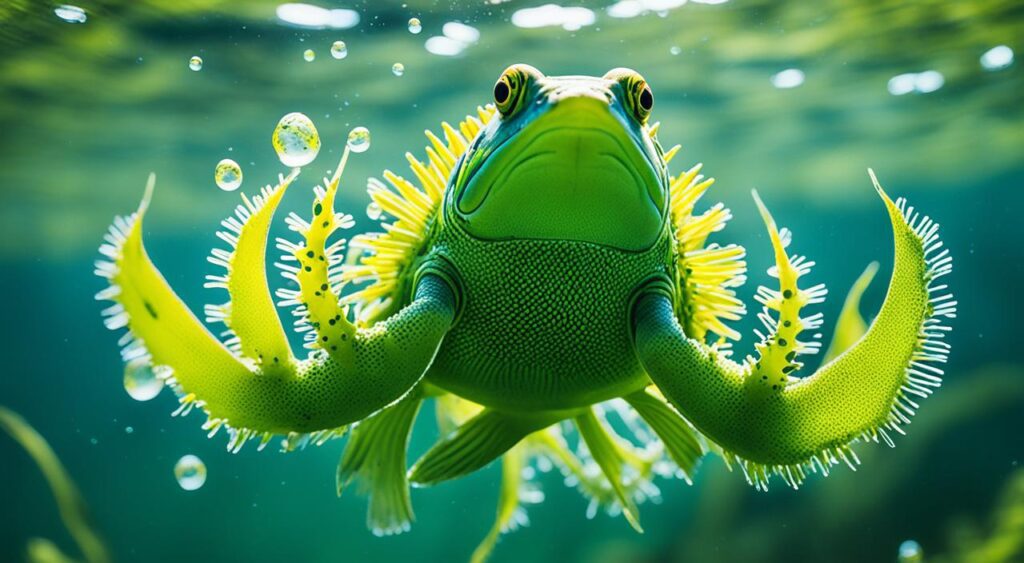
Neritina snails, such as the Zebra Nerite Snail (Neritina natalensis), are another practical option for algae control. These tiny snails feed on algae, including green algae, brown algae, and diatoms. They are known for cleaning surfaces and keeping algae growth in check. Providing a suitable environment with enough hiding places and food sources is essential to ensure the well-being of these algivores.
Manual removal can be practised to control algae growth further. This involves physically removing loose algae from the aquarium using tools like scrapers. Regular water changes also help remove excess nutrients that contribute to algae growth. By implementing these measures, such as employing algivores and performing manual removal, aquarium enthusiasts can effectively manage and reduce algae growth to create a visually appealing and balanced aquatic environment.
Fertilization during the Cycling Phase
Fertilization is a crucial aspect of supporting plant adaptation and growth during the cycling phase of an aquarium. The right balance of nutrients is essential for plants to establish themselves and thrive in their underwater environment. Several factors, such as plant mass, substrate type, and nutrient requirements, influence the amount and type of fertilizer needed.
For aquarium setups with pre-fertilized soil substrates, it is crucial to carefully monitor and adjust the levels of macronutrients and micronutrients to prevent nutrient imbalances. This ensures that plants receive nutrients without causing excessive growth or nutrient deficiency. Regular testing of water parameters and nutrient levels is essential for maintaining a healthy environment.
For aquariums with neutral substrates, adding specific fertilizers is crucial to provide the required macronutrients and micronutrients for plant growth. Nitrogen, potassium, and phosphorus are vital elements that promote healthy plant development. It is recommended to start with a reduced fertilizer regime during the cycling phase and gradually increase the dose as the plants adapt to their new environment.
It’s important to note that overdosing on fertilizers can lead to algae outbreaks and water quality issues. Careful observation of plant growth and regular testing of water parameters will help determine the appropriate dosage of fertilizers for optimal plant health.
In summary, proper fertilization during the cycling phase supports plant adaptation and growth. Whether utilizing pre-fertilized soil substrates or neutral substrates, monitoring nutrient levels and maintaining balance is crucial for creating a healthy and thriving aquatic environment.
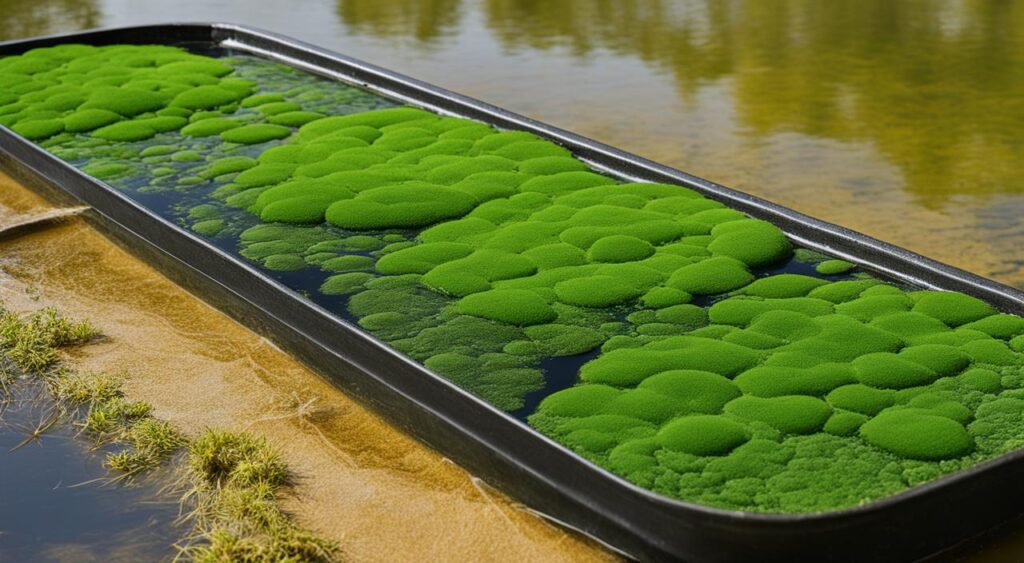
Recommended Steps for Cycling an Aquarium
There are two main approaches to cycling an aquarium: cycling with fish and cycling without fish. Your chosen method will depend on your preferences and experience as an aquarium owner. Cycling without fish is often recommended to avoid subjecting fish to potentially harmful high ammonia levels during the cycling phase.
To cycle an aquarium without fish, set up all the necessary tank components, such as the filter, heater, and substrate. Then, check and adjust the water parameters, ensuring they are within the appropriate range for cycling. It’s essential to maintain stable temperature, pH, and hardness levels.
Next, add a source of ammonia to kick-start the cycling process. This can be done by adding ammonium chloride or utilizing household ammonia that contains no additives. Regularly monitor the ammonia and nitrite levels using an aquarium test kit, as these levels fluctuate throughout the cycling phase. The cycling process is considered complete when both ammonia and nitrite levels have dropped to undetectable levels and nitrate is present in the water.
If you choose to cycle with fish, add hardy fish species that can withstand the fluctuating water conditions during the cycling phase. However, remember that this method requires frequent water changes to maintain water quality and reduce the risk of harm to the fish. Whether you cycle with or without fish, regularly monitoring ammonia, nitrite, and nitrate levels is crucial to ensure a prosperous and stable environment for your aquarium inhabitants.
FAQ
What is the cycling process in an aquarium?
The cycling process in an aquarium involves the introduction of nitrifying bacteria to regulate the nitrogen cycle and remove ammonia, nitrite, and nitrate from the water.
Why does algae growth occur during the cycling phase?
Algae growth is common during the cycling phase of a newly established aquarium due to the lack of competition from aquatic plants. Various types of algae, such as diatoms, brown algae, and green thread algae, may appear during this phase.
How can I control algae growth during the cycling phase?
To control algae growth during the cycling phase, ensure a sufficient plant density, especially with fast-growing species. Adding algivores like Amano shrimp and Neritina snails can also help control algae, along with manual removal of loose algae through water changes or using a scraper.
What role does fertilization play during the cycling phase?
Fertilization plays a vital role in supporting plant adaptation and growth during the cycling phase. The amount and type of fertilizer needed depend on factors such as plant mass, substrate type, and nutrient requirements.
How can I cycle an aquarium with or without fish?
You can choose to cycle an aquarium with or without fish. Cycling without fish is recommended to avoid exposing fish to high levels of ammonia during the cycling phase. The steps for cycling without fish include setting up the tank components, checking and adjusting water parameters, adding a source of ammonia, monitoring ammonia and nitrite levels, and introducing the first fish after the cycling process is complete.

